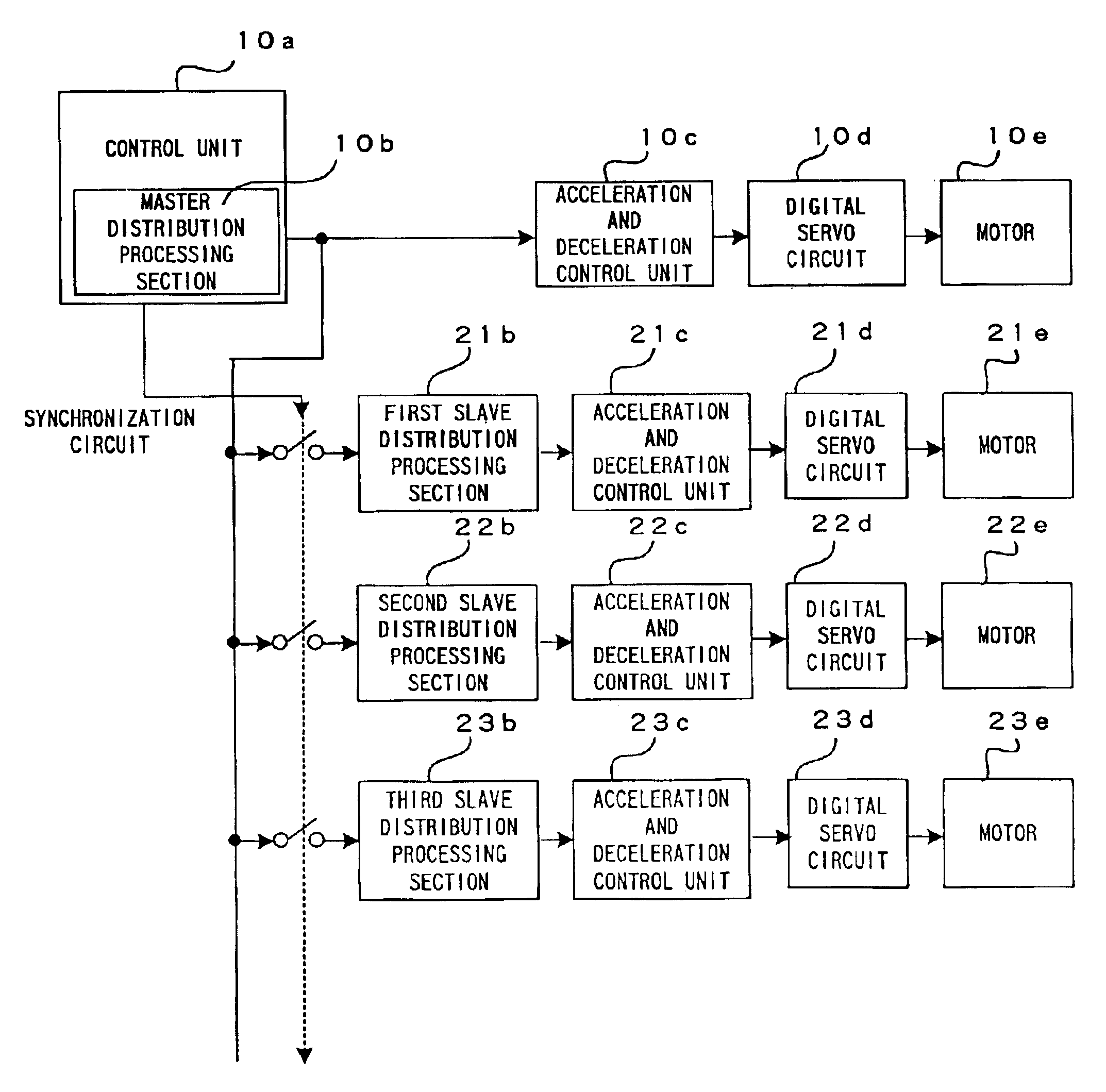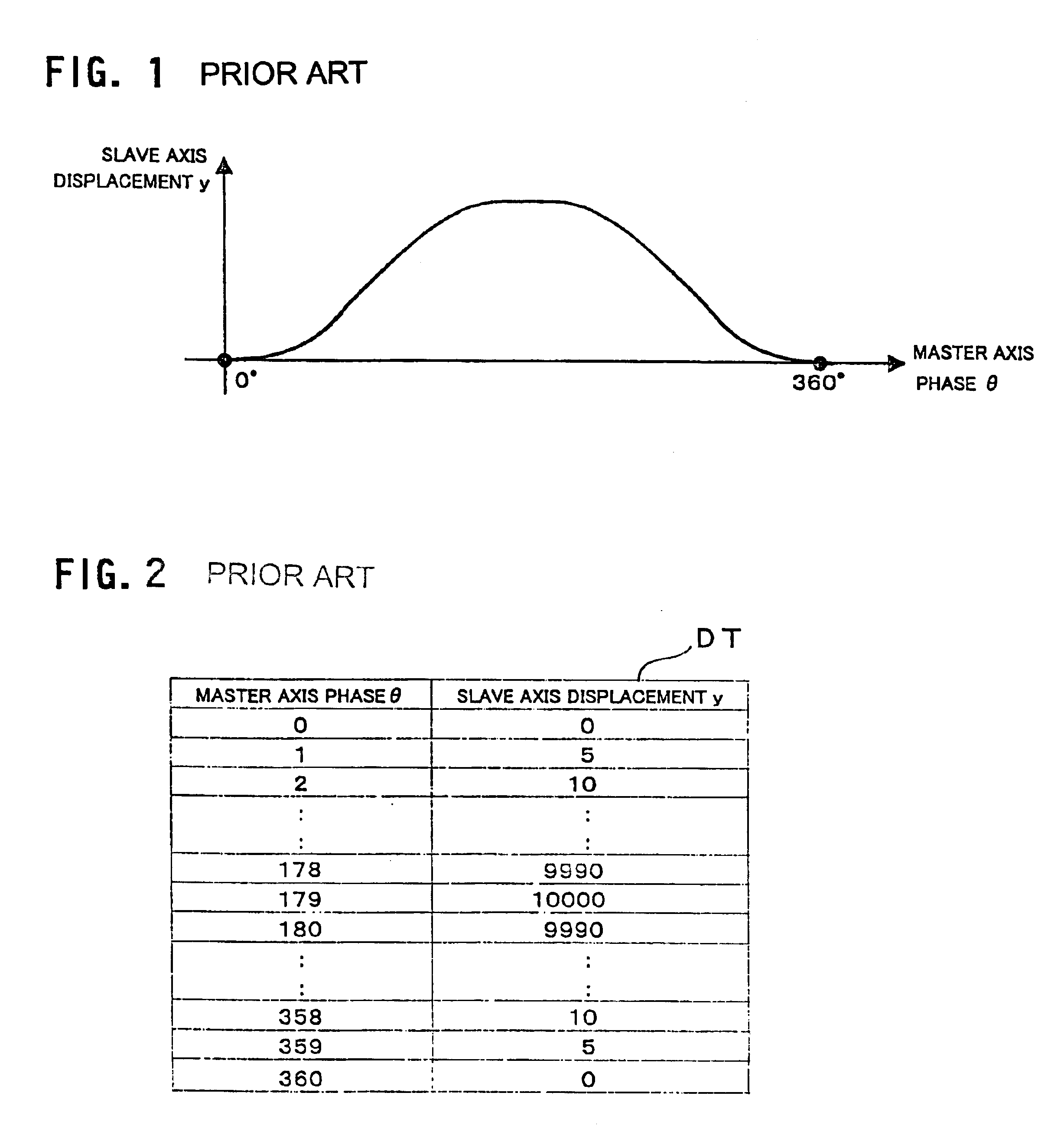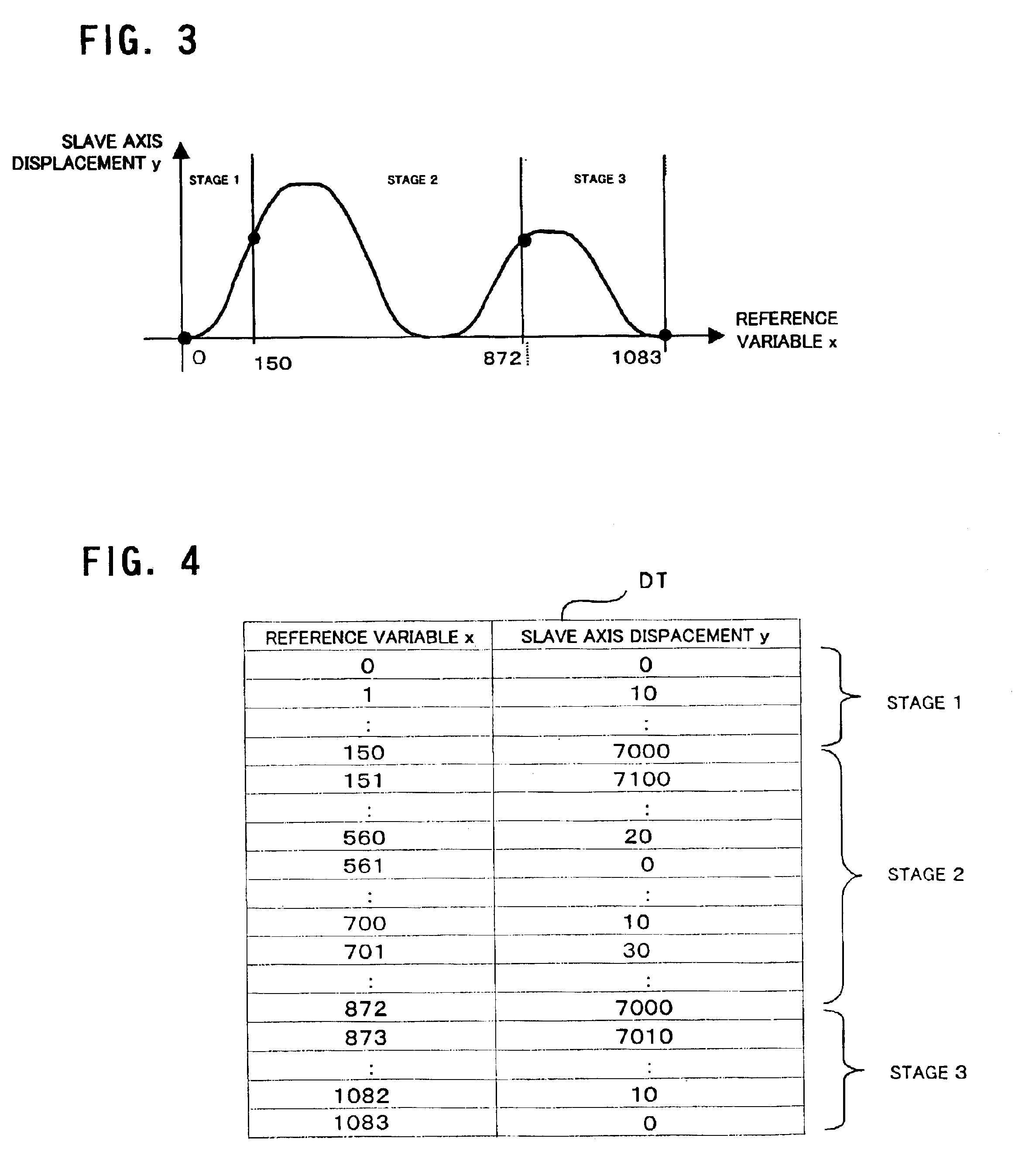Synchronization control method and synchronization control device
a control method and control device technology, applied in the direction of programme control, electric controllers, total factory control, etc., can solve the problems of not being able the machining work or processing is not smooth at the junction between displacement data, and it is not possible to change the operation of the slave axis during the operation of the master axis. , to achieve the effect of reducing the size of displacement data and reducing the data volum
- Summary
- Abstract
- Description
- Claims
- Application Information
AI Technical Summary
Benefits of technology
Problems solved by technology
Method used
Image
Examples
Embodiment Construction
[0031]FIG. 3 illustrates the state of displacement of the slave axis in one embodiment of the present invention. In the present invention, a reference variable x, which associates the position of the master axis with the slave axis displacement, is provided, and the slave axis displacement y is set and registered as a function of this reference variable x. The slave axis displacement y corresponding to the reference variable x illustrated in FIG. 3 is stored in a data table DT as illustrated in FIG. 4.
[0032]Moreover, the position θ of the master axis (the position of the master axis being an angle between 0° and 360° (=0°), which is hereinafter called the phase), and the reference variable x is set in a linear relationship, whereby, for example, the reference variable x is 0 when the master axis phase θ is 0°, and the reference variable x is 50 when the master axis phase θ is 50°. In other words, there is a direct correlation between the master axis phase θ and the reference variabl...
PUM
 Login to View More
Login to View More Abstract
Description
Claims
Application Information
 Login to View More
Login to View More - R&D
- Intellectual Property
- Life Sciences
- Materials
- Tech Scout
- Unparalleled Data Quality
- Higher Quality Content
- 60% Fewer Hallucinations
Browse by: Latest US Patents, China's latest patents, Technical Efficacy Thesaurus, Application Domain, Technology Topic, Popular Technical Reports.
© 2025 PatSnap. All rights reserved.Legal|Privacy policy|Modern Slavery Act Transparency Statement|Sitemap|About US| Contact US: help@patsnap.com



